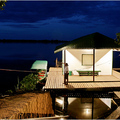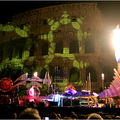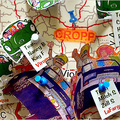CALL it the ultimate wine-country fantasy: Buy a weekend retreat in
“We were searching for agricultural property, but what drew us to this area was its beauty,” said Mr. Lynch, who said the place cost a few million dollars but declined to be more specific. He then took weekend wine recreation to a new level when he bought an existing
Life in Napa Valley is about relishing, well, the good life. Enjoying the outdoors, eating well and, of course, savoring a glass or two of wine are all part of the lure for the tourists who flock to this Northern California enclave as well as the second-home owners who put down weekend roots.
The valley, even with its agricultural economy, still carries an air of elitism. This is, after all, where so-called cult wineries have waiting lists of people clamoring to shell out $300 for a single bottle of cabernet, Thomas Keller serves nine-course $240 tasting menus at the French Laundry, and an acre of good vineyard land can bring more than $275,000.
But Napa Valley isn’t just a stomping ground for rich wine buffs. Calistoga has long had a reputation as a
“It’s less chi-chi than other towns,” said Mike Silvas, an owner of Morgan Lane Real Estate, which has five offices in Napa Valley. “For a long time, it was the cowboy town. It has moved away a bit from that. Now there are paved sidewalks. There used to be wooden walkways not so long ago.”
The Scene
Calistoga has its roots in water. Literally. The town’s natural hot springs have attracted visitors to its spas since the 19th century. But this is Napa, after all, so weekend life is also about the wine. Rental
Lincoln Avenue, the main street downtown, is lined with small hotels, restaurants and clothing stores. There are older Craftsman-style bungalows on the side streets that radiate off Lincoln, convenient for grabbing breakfast in town and walking to the Saturday farmers market.
Because it is at the top of the valley, Calistoga still has a more rugged and rural feel than other valley towns. “When I have buyers looking for a charming, self-contained village feel, we head for Yountville,” said Cyd Greer, a real estate agent with Coldwell Banker Brokers of the Valley in neighboring St. Helena. “For those craving a connection to the land, a more natural ambiance, we head north to Calistoga.”
Elaine Jennings bought a 1,200-square-foot two-bedroom house for $340,000 in 2001, and estimates that it would bring more than $500,000 today. “I’ve always been fascinated with Calistoga, since I live in
Ms. Jennings can often be found on one of the bike trails or on Grant Street and Tubbs Lane in town, although she avoids Highway 29, because the traffic is so heavy.
Biking and
Pros
Compared with other desirable Napa Valley towns like St. Helena and Yountville, Calistoga offers more for your dollar. “Calistoga affords buyers about 20 percent more bang for their buck relative to St. Helena,” Ms. Greer said, noting that average square footage costs for a home in Calistoga run just under $500 contrasted with $625 a square foot in St. Helena.
Cons
Since Calistoga is the northernmost town in Napa Valley, getting there on weekends means contending with traffic congestion caused by all the other weekenders. The drive on a Saturday up Highway 29 can be slow in summer and in the fall harvest season, which draws tourists and means more activity at wineries. Calistoga installed a new water system a few years ago, so homeowners pay more for their water than other towns in wine country.
The Real Estate Market
Calistoga real estate falls toward the bottom of Napa Valley prices. But don’t expect to find a bargain. Mixed in with the older in-town bungalows there are more secluded, and wallet-stunning wine country spreads like a $15,995,000 nine-bedroom house on 153 acres, and a three-bedroom house complete with a wine cellar and a tasting room of $6.800 million. There are options, though, for buyers seeking a more modest dwelling.
“There are still quite a few fixer-uppers,” said Sharon Carone, a co-owner of Calistoga Realty. A bungalow in town, ideal for someone who wants to park the car and walk to lunch or dinner, starts at $600,000. A similar home that needs work might be closer to $500,000, she said.
These smaller homes can fly off the market. Earlier this year, a listing for a two-bedroom Craftsman bungalow, under 1,000 square feet, went into contract within a week of going on the market at $545,000. “Those kinds of properties get picked up very quickly,” Mr. Silvas said. Buyers in Calistoga can also find bigger parcels. Some 40 percent of transactions last year were for properties of more than an acre, a larger percentage than in neighboring St. Helena.
Annual real estate sales generally involved around 60 properties, but those numbers could rise with new construction. New permits for hookups to the town’s sewer system for all development ceased until capacity could be increased. But in 2004, the town started to grant a limited number of permits each year. Last year, eight new homes hit the market.
On the luxury end, there is another alternative. Calistoga Ranch, a hotel off the Silverado Trail operated by Auberge Resorts, has 10th shares of two-bedroom homes, complete with an outdoor living area centered around a grand fireplace. Susan and Bill Bazinett, from Danville, Calif., bought a share for $425,000 in 2005 after looking at full-ownership homes in other Napa Valley towns at higher prices.
“There was absolutely nothing you would want to stay in,” Ms. Bazinett said. “For the type of house comparable to the lodge at Calistoga Ranch, you would really have to be a $2 million-plus buyer.”
Their share entitles them to a minimum of three weeks of stays a year at the home, where they ride bikes and hike through the property, attend wine tastings and store their wine in the resort’s wine cave, which is carved into the side of a hill.





